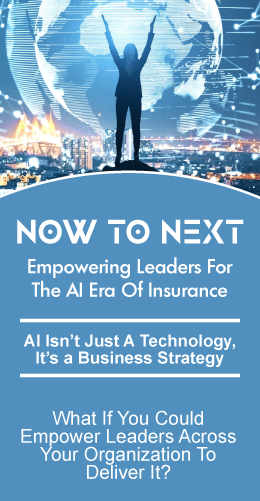
Digital Ecosystems are maturing at a rapid rate across multiple industries. The impact they will have on insurance and its business models is profound. While insurance is behind, there are some early examples from China’s Digital Insurance Leaders ZongAn and PingAn. Their ecosystems provide customers with interoperable and blended solutions that include insurance, banking, and other services. Solutions with a very different business, product, distribution, and customer engagement models. Models that exponentially increase the options and the reach of those who deploy them and that will forever change insurance.
Digital Ecosystems are a combination of ecosystem coordinators, platform, solution, and services providers, and customers that are interconnected digitally. In healthy ecosystems, their symbiotic and competitive relationships continually increase the value of the ecosystem for participants.
Ecosystem orchestrators like Apple, WeChat, Google, Amazon, SalesForce or in Insurance’s case like Ping An and ZangAn set up and manage overall ecosystems. They provide infrastructure, standards, and in many cases regulate who can participate in the ecosystem and how. Platform providers like Linkedin, Azure, AWS, and Gitup provide and manage specific software platforms that enable other solutions to interconnect and provide services. Solution services providers operate across one or many platforms and ecosystems.
Ecosystems: Gateways to Exponential Business & Product Models
There are multiple types of Ecosystems, Platforms, and Solutions at play within the emerging world of Digital Ecosystems. They are continually evolving as are the business models within them. Additionally, the lines between them can be quite blurry. The following are the primary models and are presented here in a relative simple form.
Ecosystem Orchestrators are responsible for building and maintaining the business, technical, and customer value creation framework that attracts and builds the overall ecosystem. The models for these are still emerging and changing. In today’s world, these are typically global in scale and reach. Typically the orchestrator generates revenues through, advertising, transaction fees, and new services offerings and building and deploying adjacent businesses. Ecosystem Orchestrators have an infinite range of businesses, platforms, products, and services they can choose to develop and or acquire or financially participate in.
Many of the established orchestrators have offerings at all these levels. The payoff for successfully building and managing these is huge as you can see from the market valuation of the companies that have done so. Building, growing, and managing an Ecosystem takes a tremendous amount of capital, partner development resources, and business flexibility. It also takes a business, design and development team that understands and can deploy business models and architectures that operate at internet/world scale. Because of these requirements, becoming an Ecosystem Orchestrator isn’t something most companies have the ability to do.
Platforms support the larger ecosystem and many cases multiple ecosystems. They usually derive financial value from bringing producers and customers together. Examples include Insurance Aggregators, Android, Iphone, Square, Facebook, Gaming Consoles, etc.. They focus on creating an interoperable environment with a specific market or solution focus that enables solution providers to easily tie into. In many cases, they also provide a framework that delivers a reasonably consistent user experience.
Platform providers will typically monetize from a variety of sources including licensing, subscriptions, ad and transaction fees. In today’s world of ecosystems, platform providers are also beginning to make it easier for the solution and services providers that use their platform to connect and interoperate with other platforms and ecosystems. Developing deploying and managing a platform is a bit easier than developing and managing an ecosystem, but still takes many of the similar skills and resources. Successful platforms can and do become ecosystems.
Solution / Services Offerings are the applications or services the customers or users of the ecosystem or platform interact with. Examples are specific applications that run on a Salesforce platform or on Android or iPhone. Increasing many of these are designed and developed to run across multiple platforms or ecosystems with a common or very similar codebase to keep the support and development costs at a minimum.
As the interoperability frameworks mature it is becoming increasingly easy for these solutions to be bundled together in a solution personalized for the customer. These individual Solutions or Services are SaaS-based and have multiple business models by which they monetize. Those can include free, freemium, or paid subscription model offerings to the end consumer, and or a transaction fee or advertising fee for companies who access the end customer through them.
Developing a Digital Ecosystem Strategy for Insurers is an urgent strategic and tactical requirement. Digital Ecosystems and the platforms within them are becoming primary market gateways. Gateways not only to customers but to the amazing array of solution providers and data sources within them. Not having a Digital Ecosystem strategy will soon be tantamount to not having a customer engagement, distribution, or product strategy in major market segments.
It Starts with the Customer. Developing a Digital Ecosystem Strategy doesn’t start with technology. It starts with the customer. Who are they, what do they value, what ecosystems, platforms, and services do they participate in? What are their goals? What barriers and risks do they face? What needs do they have at the different decision and touch points in their life or business journeys? Which Ecosystems and Platforms align most strongly with their lifestyle or business and needs? What solutions or services best address those needs?
What Creates the Greatest Value? The next question is what combination of insurance and other value-added services will provide them the greatest value. Will those needs change as their situation changes? What aspects of the solutions need to be dynamic to adjust to those changes? What data and analytics from what sources are available to help identify those needs/risks and the resources to mitigate or recover from them. What opportunities are there to create and monetize value created for the end insured, but also for ecosystem and platform partners. What business models will be required to integrate with those ecosystems and platforms and to provide exceptional value to the customer and to participating partners? What business models will enable solutions to be continually enhanced or innovated and enable easy addition or subtraction of partners as customer needs change or more innovative solutions become available?
Alignment with Business Vision, Strategy, and Capabilities. The next question is how do those needs and requirements align with your internal vision for the future of insurance and your company and its strategy? How do they align with your capabilities and competencies. Do you have the depth of technical and business resources to attempt an Ecosystem Orchestration or Platform play? Are you better off starting with a solution or a solution component that could give you a foothold in multiple ecosystems? Could that solution support a land and expand strategy? Who are the primary Ecosystem Orchestrators and Platform providers and what partnering models would create the greatest benefit for the end customer, the partner and you?
Interoperability, Scalability, Agility, and Security are critical to participation at any level within Digital Ecosystems. That means cloud and microservices based solutions are a requirement. Identity and data management and security will also be important design considerations as it likely the end user will be using blended solutions composite from multiple providers. Interoperating these with existing legacy systems likely won’t be feasible without a layer of services between them.
Exponential Business Models. These next generation ecosystem based business models open the door to reach and support customers across a much broader number touch points and partners. They create opportunities to work at global scale, assuming regulatory and localization issues can be addressed. They give us the ability to deliver highly personalized solutions that adapt in real tie to the customers needs.
Designing and delivering them will require a different way of thinking about the customer and the solution. They will need to be designed to support new revenue and partnering models that are far more open. They will also need to provide value to the end insured and partners in a number of different settings. Designing them will require thinking through not only customer needs but also ways to reduce channel conflict and to support the customer seamlessly across multiple touch points and partner interactions.
Yes, building these is a little complex, but companies are making rapid progress in working through the challenges. If your company isn’t already working through these questions and challenges, it’s time to start. The opportunities for those who do are huge. The opportunities for those who are late to the game will be far less, and it will be much harder for them to catch up.
Love to hear your thoughts and experience in developing these strategies and solutions.
Mike Connor, CEO, SVIA







